“It’s as pretty as chocolate pie, right before momma spreads the meringue on it.”
– The Honorable John H Graham
I have to give a big shout out to an old friend of mine, Cecil Holmes. Cecil and I are old college buddies from our days at Snead State. And just as it too often happens, we had kind of gone our separate ways. That is until I started seeing his work on Facebook, and his blog site, http://www.cecilsphotos.com. Talk about some cool pics, he has really created a unique style of shooting pictures. So several weeks ago I was fortunate enough to have him come up (he is truly a busy man on the weekends) to take some much-needed shots of several of my items.
The picture above is of the Postal End Table that is photographed in the home of The Honorable John Graham. I loved how the light reflects off the top as if it were a mirror. Yet, the top is 120 year old wood reclaimed from the Wannville Post Office, finished with traditional Tung oil and a hand rubbed lacquer top coat.
Below is a new piece that I’ve added to the Postal Collection. I think it makes the perfect addition as a wet bar/ beverage stand. The top, again, comes from the Wannville Post Office. The stand was built from rough cut poplar wood that I collect from the farm, which I believe came from a dismantled shed.
And finally, here is the coffee table that currently resides in my living room. It was a storm casualty from 3 years ago and actually laid in our yard until January 2011 when I milled it with my chainsaw mill. Just as most of my pieces, I am always amazed with how something that is so rough, so dingy, and can seem so lifeless laid out in the yard, can be transformed into something so full of warmth and so full of vibrant color.
I had to include the shot below. The picture is of the Wann family standing in front of their home, which was still standing on the farm when I purchased it some 12 years ago. Looking back, I am really glad that I was able to salvage what I could out of the house before I dismantled it due to unrepairable decay. For instance, the grey stiles that I use for the Postal End Tables and the Postal Entertainment Bar were originally part of the wainscoting in the house. And the tops were originally the shelves of the Wannville Post Office. So what better way to preserve the past than to be able to bring it into your home as a piece of furniture. I think it can best be stated as follows:
“The patina of each piece is alive with the history of the past, of the people who operated the Wannville Post Office, the folk who came there to mail letters to far off kin and others who came there hoping to hear from a loved one gone from sight, but not heart. It’s a real “if this table could talk” feeling to me–I can’t help but think of the lives its touched, of the goods sold across the old store counters, of the stripped coconut candy bars it held and the plugs of tobacco cut on it. All of the emotions, hopes, dreams and wishes it has witnessed seem embodied in it as it becomes part of our home, our family. I hope that we will have it for many years yet unrealized and, one day, it will trundle off to a new home, with a new family, bearing a little bit of our history mixed in with all the archive it now holds.” …Another great statement from my friend, Honorable John Graham.

Thanks again to Cecil Holmes for the photos. Will Parks for the use of your lovely, exotic office. And to John Graham for the use of your home, as well as all the literary inspiration.


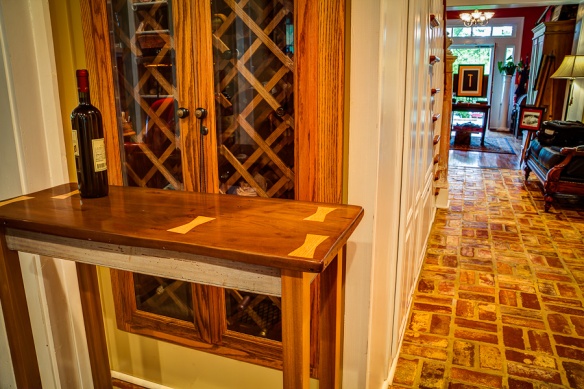







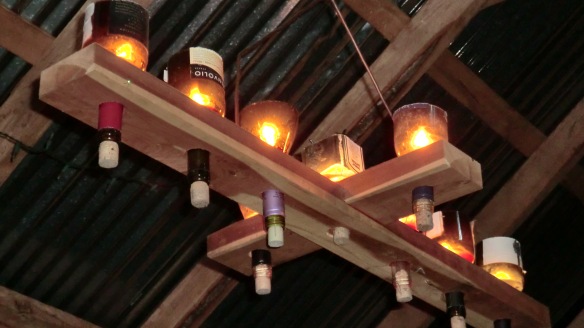
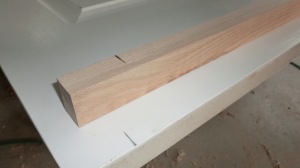
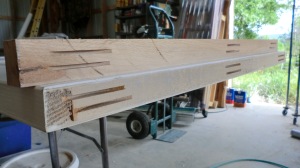

 Once assembled there was a seam between the door and the wood. This was due to the door having a very small chamfer edge. Not a problem as I filled it with a 2 part wood filling putting, leaving it a little proud, and then sanded with a random orbital sander once it was dry. The picture to the left illustrates the repair with only one coat of primer. One thing to keep in mind is to follow the wood grain of the door with the new repair. Also, some heavy brush stokes will help to add some of the graining which will blend the repair in with the door.
Once assembled there was a seam between the door and the wood. This was due to the door having a very small chamfer edge. Not a problem as I filled it with a 2 part wood filling putting, leaving it a little proud, and then sanded with a random orbital sander once it was dry. The picture to the left illustrates the repair with only one coat of primer. One thing to keep in mind is to follow the wood grain of the door with the new repair. Also, some heavy brush stokes will help to add some of the graining which will blend the repair in with the door.
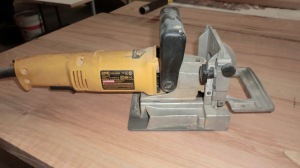



 And here is the almost finished product. Notice the joint where the two boards were joined. Pretty hard to find? I’d say that’s exactly what we were trying to accomplish. Now all that is left are 4-5 coats of lacquer and then to hand rub the surface for a rock hard, yet mirror-like finish.
And here is the almost finished product. Notice the joint where the two boards were joined. Pretty hard to find? I’d say that’s exactly what we were trying to accomplish. Now all that is left are 4-5 coats of lacquer and then to hand rub the surface for a rock hard, yet mirror-like finish.








